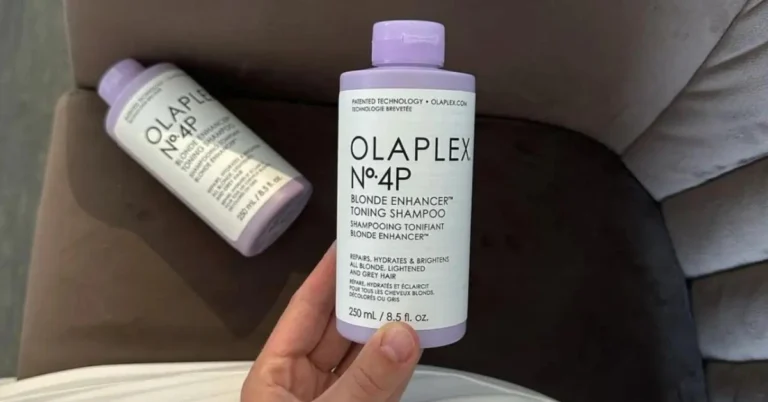Are you keen on escaping the aggravating clutches of acne? Navigating the path to attain flawless skin can seem like a perpetual challenge, dotted with numerous treatment options. Within this vast sea of alternatives, we are thrilled to present to you a powerful pair that has garnered widespread interest: clindamycin and salicylic acid.
Together, they hold the key to addressing your acne issues and unlocking the path to clearer, healthier skin. We’ve all experienced those moments of desperation, scouring the skincare aisle in search of that elusive product to calm our persistent acne breakouts.
Table of Contents
Clindamycin And Salicylic Acid
Enter clindamycin, a topical antibiotic ready to wage war on the acne-causing bacteria lingering on your skin’s surface. But its powers extend beyond eradication. It also joins forces in the battle against inflammation, soothing those angry, red blemishes.
Now, meet salicylic acid, a powerful exfoliant eager to dive deep into your pores. Its mission? To eliminate acne-causing bacteria and quell inflammation from within. Picture the strength they possess when combined.
Say goodbye to the frustration of trial and error. The solution you’ve been seeking may lie in the synergy of clindamycin and salicylic acid. It’s time to break free from the cycle of breakouts and reclaim your confidence.
But don’t just take our word for it. Let us guide you on this transformative journey as we explore the potential of this powerful duo. Discover if the combination of clindamycin and salicylic acid is the missing piece to your acne puzzle. Your path to clear, radiant skin awaits.
Overview of Clindamycin and Salicylic Acid
We’re excited to share some crucial information about clindamycin and salicylic acid, two key ingredients that can help manage skin conditions such as acne. This friendly discussion will explore the roles played by these components in maintaining skin health.
Clindamycin is a popular medication used for treating various bacterial infections. It has a wide range of applications, including, but not limited to, septicemia, intra-abdominal infections, lower respiratory infections, gynecological infections, bone and joint infections, and skin and soft tissue infections. It is even effective against streptococcal pharyngitis or ‘strep throat.’
On the other hand, salicylic acid is a well-known acne treatment agent. Its anti-inflammatory and comedolytic properties help unclog pores and reduce swelling, making it a common ingredient in various skincare products. Combining salicylic acid with clindamycin can enhance their overall effectiveness in treating acne.
Clindamycin, being an antibiotic, has its drawbacks too. The most significant being its propensity to cause antibiotic-associated diarrhea, including Clostridioides difficile colitis. However, when appropriately administered under medical supervision, it can be an invaluable weapon against various bacterial infections.
Benefits of Clindamycin
Topical clindamycin solution on red pimples daily, and Topical acretin 0.025% on all face every other day and it will go away in a week to 10 days.
— Ahmed ✨ (Beyoncé stan) (@AhmedHive) July 4, 2023
We’ve got great news for those struggling with acne: combining clindamycin and salicylic acid can be an effective way to treat your skin woes. This dynamic duo offers both antibacterial properties and anti-inflammatory effects to help you achieve clear, healthy skin.
Antibacterial Properties
Clindamycin is a topical antibiotic that works wonders in reducing acne-causing bacteria. When applied to the skin, it helps to minimize the presence of these harmful microorganisms, resulting in a decrease in acne breakouts.
It can be used on all skin types and is available in different formulations, such as gels for those with oily skin and lotions for those with dry skin.
Anti-Inflammatory Effects
Salicylic acid is another key player in treating acne. It works as a powerful exfoliator, breaking down dead skin cells and unclogging pores. In combination with clindamycin, it helps to enhance the antibiotic’s efficacy.
A study found that a lotion containing 1% clindamycin combined with 2% salicylic acid resulted in a significant reduction in acne lesions.
Together, clindamycin and salicylic acid create a formidable team, fighting acne with their antibacterial and anti-inflammatory capabilities. Give your skin the care it deserves by incorporating these ingredients into your skincare routine.
Benefits of Salicylic Acid

Throughout our skincare journey, we’ve come across various products and ingredients. One duo we cannot ignore is clindamycin and salicylic acid. These powerhouses work wonders! Before we talk about our personal experience, let’s dive into the world of salicylic acid and uncover its fantastic benefits.
Exfoliating Properties
First off, salicylic acid is well-known for its exfoliating properties. As a beta-hydroxy acid (BHA), it penetrates deeper into the pores, breaking down dead skin cells and unclogging them.
This leads to a smoother, more radiant complexion. We have noticed that continuous use of salicylic acid-based products has made a remarkable difference in our skin’s texture.
Acne Treatment
Just get a face wash and toner with active acids like salicylic acid or azelaic acid. Then use your sunscreen religiously, your acne will go away. I’m speaking from experience. What worked for me.
— Adanna (@Adanna_CI) April 2, 2023
One can’t mention salicylic acid without touching on its prowess as an acne treatment. It effectively combats acne-causing bacteria, reduces inflammation, and removes excess oil from the skin, which can contribute to breakouts.
Our experience with salicylic acid products has left us utterly impressed – we’ve seen a significant reduction in acne, making our skin clearer and healthier.
Reduction of Sebum Production
Lastly, salicylic acid helps to regulate sebum production. Excessive sebum can lead to clogged pores, acne, and an oily complexion – all of which we want to avoid. By using salicylic acid, we’ve managed to control our skin’s oil production, leading to fewer breakouts and an overall improved appearance. It has been a game-changer for our skincare routine!
In our experience, clindamycin and salicylic acid have truly shown their worth in the world of skincare. With their exfoliating properties, acne-fighting abilities, and regulation of sebum production, we can’t help but sing the praises of these remarkable ingredients.
Combining Clindamycin and Salicylic Acid
✅ Removes skin tags
✅ Makes skin very much smoother
❌ Smells a little bit weird
Imagine a dynamic duo that can help combat your acne breakouts, one powerful combination that can enhance your skincare routine – clindamycin and salicylic acid. But are these two acne-fighting heroes more effective when used together? Let’s find out.
Clindamycin is an antibiotic that helps reduce acne-causing bacteria, making it an excellent choice for treating inflammatory acne. On the other hand, salicylic acid is a popular ingredient for addressing acne concerns due to its comedolytic properties, which means it helps unclog pores and remove dead skin cells.
Here’s a quick summary of the benefits of each product:
| Product | Benefits |
|---|---|
| Clindamycin | Reduces acne-causing bacteria, can treat inflammatory acne |
| Salicylic Acid | Comedolytic, unclogs pores, removes dead skin cells |
Using the two products together may seem like a great idea, and the good news is that you can! However, it may be better to wait for about 30 minutes between applications for the best results. This waiting period minimizes any possible irritation and allows each ingredient to work effectively on your skin.
Incorporating clindamycin and salicylic acid into your skincare routine may provide better results than using either product alone. Their complementary actions help tackle the different aspects of acne, making them a powerful combination.
So, go ahead and give this duo a try. With our newfound understanding of their individual benefits and how to use them together, we’re one step closer to achieving clear, healthy skin.
Personal Experiences

My journey with clindamycin and salicylic acid started when I couldn’t find an effective solution for my frequent breakouts. I decided to give this combination a try, as I’d heard great things about their acne-fighting properties.
If you’re also struggling with acne, let me share how this duo worked for me, along with some tips that might help you too!
In the beginning, I was skeptical about using both clindamycin and salicylic acid together. However, after some research, I learned that combining these two powerful ingredients could potentially deliver better results in combating acne.
Clindamycin works as an antibiotic, reducing acne-causing bacteria, while salicylic acid helps exfoliate the skin and unclog pores. I started by applying a clindamycin gel in the morning, and later in the day, I’d use a salicylic acid cleanser to gently exfoliate my skin.
Pro tip: gradually introduce these products into your skincare routine to avoid any potential irritation, especially for those with sensitive skin.
After a few weeks of consistent use, I noticed a significant reduction in my breakouts. My skin appeared clearer, and even the redness and inflammation had subsided. It was quite amazing to see how this combination of clindamycin and salicylic acid helped me regain my confidence and improved the overall appearance of my skin.
Throughout this experience, I learned the importance of sticking to a consistent routine and using products that work synergistically to combat acne. So, don’t lose hope! With the right combination, like clindamycin and salicylic acid, you too may be on your way to clearer, healthier skin.
Precautions and Side Effects
Gross. I am allergic to penicillin and amoxicillin… clindamycin … basically all inorganic antibiotics.
— Wild Honey (aka Honey Bones) (@WildHoney808) July 7, 2023
We know it can be tricky finding the right skincare products for you, especially when it comes to medications such as clindamycin and salicylic acid. But don’t worry, we’re here to help you understand the precautions and potential side effects to watch out for when using these effective treatments.
Common Side Effects
First, let’s discuss the common side effects associated with both clindamycin and salicylic acid:
- Clindamycin: while widely used to treat various infections, some may experience side effects like diarrhea, dizziness, and nausea.
- Salicylic acid: mainly used for treating acne, it may cause skin irritation, peeling, and dryness.
However, most people tolerate these medications well without significant issues. Remember to always consult your healthcare professional if you experience any severe side effects or have concerns.
Potential Interactions
It’s essential to be aware of the possible interactions these medications could have with other skin-care products or even health issues. Here are a few points to consider:
- When using clindamycin, the risk of Clostridium difficile-associated diarrhea may be higher compared to other antibiotics. If you notice severe and persistent diarrhea, see your doctor immediately.
- In rare cases, using salicylic acid may cause serious allergic reactions, such as hives, itching, or trouble breathing. If you develop any of these symptoms, discontinue use and seek medical attention.
We hope this information helps guide you in your skincare journey, empowering you to make informed decisions about whether clindamycin and salicylic acid are the right treatments for your unique needs. As always, reach out to your healthcare professional for personalized advice.
Clindamycin and Salicylic Acid: A Recap
Are you tired of dealing with persistent acne, and looking for a more effective solution? Your search might just be over! Let us introduce you to clindamycin and salicylic acid – two powerhouse ingredients that can help tackle this issue and give you clearer skin.
Clindamycin works its magic by reducing acne-causing bacteria, making it particularly helpful for inflammatory acne. On the other hand, salicylic acid is known for its comedolytic properties, meaning it can help unclog pores and prevent new breakouts. When used in combination, these ingredients create a dynamic duo that shows promising results!
However, like any skincare product, there are pros and cons to consider before jumping on the clindamycin and salicylic acid bandwagon:
| Pros | Cons |
|---|---|
| Reduces acne-causing bacteria | Can cause skin dryness |
| Helps unclog pores | Not ideal for sensitive skin |
| Suitable for different acne types | May require a prescription |
From our personal experience, we recommend patch testing the products first to ensure your skin tolerates them well. If you happen to experience excessive dryness or irritation, consider lowering the frequency of application or using a milder version of the product.
In conclusion, clindamycin and salicylic acid can be a game-changer for anyone struggling with acne. It’s crucial, though, to use the products correctly and keep your skin’s needs in mind. With consistency and patience, you might just achieve the clearer complexion you’ve always dreamed of.
FAQ

FAQ
How fast does clindamycin work?
You may start noticing an improvement in symptoms within a day or two of starting clindamycin. If there is no improvement or your symptoms worsen after a few days, it is advisable to consult your healthcare provider for further evaluation and guidance.
Is 7 days of clindamycin enough?
The duration of clindamycin treatment depends on the specific condition being treated and the severity of the infection. While a 7-day course may be sufficient for certain infections, it is important to follow your healthcare provider’s instructions regarding the duration of treatment to ensure optimal effectiveness.
What are side effects of clindamycin?
Common side effects of clindamycin may include diarrhea, nausea, vomiting, abdominal pain, and skin rash. Less common side effects can include allergic reactions, severe diarrhea, or changes in bowel habits.
Can I put clindamycin on after moisturizer?
It is generally recommended to apply clindamycin before moisturizer. This allows the medication to directly contact the skin and be absorbed effectively. However, it’s best to follow the specific instructions provided by your healthcare provider or the product’s packaging for optimal application order.
If you liked this blog article: Clindamycin and Salicylic Acid: A Skincare Power Duo?, don’t forget to leave us a comment down below to tell us about your experience.






